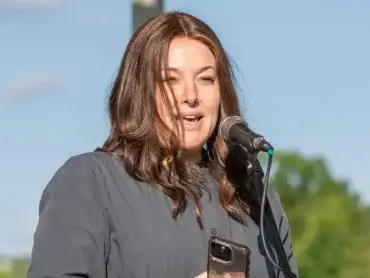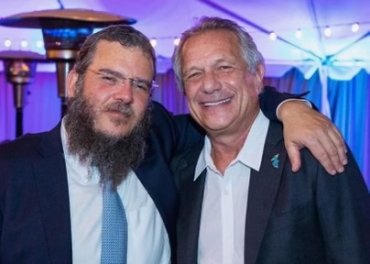6 Orthodox Jews Who Made Their Mark On the American Revolution
From America’s earliest beginnings, Orthodox Jews* have been a part of the picture. The first American synagogue was New York’s Orthodox Shearith Israel, founded in 1654. Here are the top six Torah observers and their part in early American History.
- The Soldier at Valley Forge** – The menorah lights may have helped General Washington persevere as his half-beaten Army braved the 1777 winter at Valley Forge. A soldier lighting candles explained to Washington that he was a Jew and lit to commemorate Chanukah, the miraculous victory of his people over an oppressive enemy. Just as the Jews were ultimately victorious, so too could Washington be. Washington was greatly encouraged. The rest is history.
- Mordecai Sheftali – A merchant colonel in the Continental Army during the Revolutionary War, Sheftali was the highest-ranking Jewish officer. For many years, the only shul in Savannah was a room in his house. When the British attacked, he provided money for the American cause. He was captured and placed on an English prison ship. In 1782, he helped establish the still-active “Synagogue of the American Revolution,” Congregation Mikveh Israel in Philadelphia.
- Haym Salomon – This patriotic financier, broker and immigrant from Poland helped create America’s first semi-central bank and advised Alexander Hamilton on the building of America’s financial system. As a prime financier of the Revolutionary War, his personal lending provided the equivalent of millions to George Washington in his war effort. He died poor at age 44 of Tuberculosis contracted in a British prison from which he had previously escaped.
- Rabbi Gershom Mendes Seixas – Seixas urged his congregation, Shearith Israel, to pray that the English would leave. One congregant said they thought it better to “die in the cause of liberty than to live and submit to the impositions of an arrogant government.” The synagogue was abandoned, the Torah scrolls saved by Seixas and the congregation fled to Philadelphia, with many enlisting in the Colonial Army.
- Jonas Phillips – Phillips was an indentured servant to a Sephardic Jew. He became a merchant in New York and married a Shearith Israel member with whom he had 21 children. His family abandoned the shul and moved to Philadelphia where he became yet another founder of Mikveh Israel and served in the Militia. He was America’s first religious-liberty activist. One of his grandsons was Chief Justice of the South Carolina Supreme Court, another was the first Jewish Commodore in the U.S. Navy. His great-grandson was governor of South Carolina.
- Jacob Mordecai – A rifleman in Philadelphia, he supplied the Continental Army as a clerk to Washington’s Jewish quartermaster. Mordecai married and moved to North Carolina where they were the only Jews for miles, They kept strict kosher and Shabbos observance as he published biblical research. He was chosen as headmaster for the new Warrenton Female Seminary. Although non-sectarian, the school stressed character development (middos) and observed all chagim. Its reputation spread so quickly that Mordecai was forced to cap enrollment.
*While the term “Orthodox” was not used until after the Revolution (as a response to the Reform movement), our using “Orthodox” here is to indicate that the beliefs and practices of the people on this list match those of Orthodox Jews today.
**The historical source for the story is a second-hand account, but is nonetheless fairly credible. In December, 1778, General George Washington had supper at the home of Michael Hart, a Jewish merchant in Easton, Pennsylvania. It was during the Hanukkah celebration, and Hart began to explain the customs of the holiday to his guest. Washington replied that he already knew about Hanukkah. He told Hart and his family of meeting the Jewish soldier at Valley Forge the previous year. (According to Washington, the soldier was a Polish immigrant who said he had fled his homeland because he could not practice his faith under the Prussian government there.) Hart’s daughter Louisa wrote the story down in her diary. The story has been quoted by several Jewish historians, including Rabbi I. Harold Sharfman in his 1977 book, Jews on the Frontier.[3]
Some minor edits were made to this piece post-publication.
If you found this content meaningful and want to help further our mission through our Keter, Makom, and Tikun branches, please consider becoming a Change Maker today.








3 comments
Sort by
It would be interesting to find out if their ancestors came on Christopher Columbus second voyage. Majority of Jews form that trip settled in Savannah, GA, and Charleston, SC, and were Sephardic Jews form Spain/Portugal.
This is very misleading. It uses “Orthodox” as a stand-in for traditional Judaism. But there was no such thing as Orthodox Judaism at the time of the American Revolution.
Thanks for your comment, David. We added a note that while the term “Orthodox” hadn’t been invented yet, how these men practiced and believed is what is called Orthodox today. The word “traditional” or “observant” does not necessarily mean fully Torah observant and believing in the halachic process. So we found that using those terms would not be specific enough.